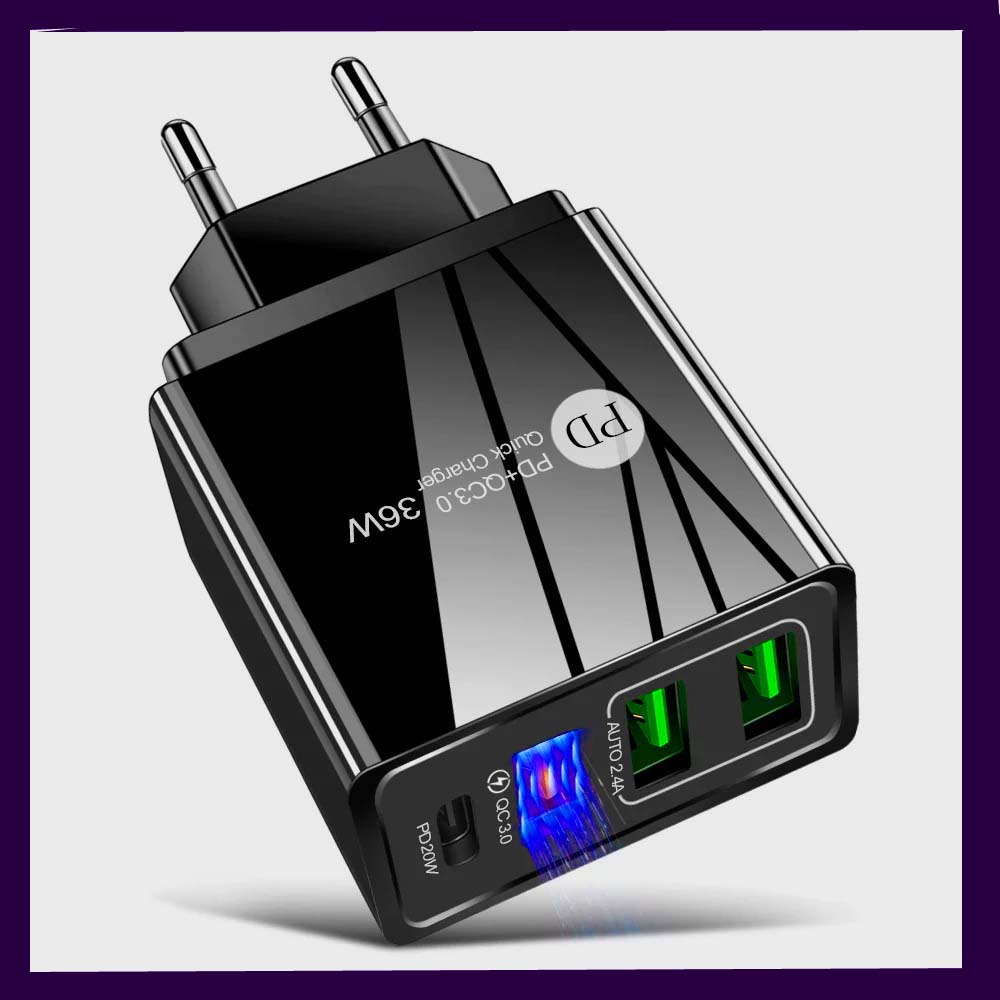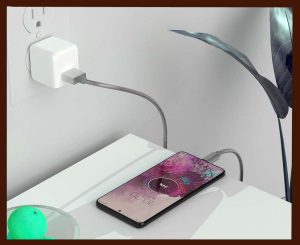

Mobile charging with PD 3.0:
Mobile charging with PD 3.0 (Power Delivery 3.0) refers to the use of the Power Delivery standard version 3.0 for charging mobile devices such as smartphones, tablets, and laptops. PD 3.0 is a fast-charging technology that enables higher power transfer rates and more efficient charging compared to standard USB charging methods.Here’s how it generally works and its advantages and disadvantages:
How it Works:
- Negotiation: When a device is connected to a charger supporting PD 3.0, it communicates with the charger to negotiate the power requirements and capabilities. This negotiation includes parameters such as voltage, current, and power profiles.
- Dynamic Power Delivery: Based on the negotiation, the charger dynamically adjusts the voltage and current levels to deliver the optimal power to the device. This allows for faster charging while maintaining compatibility and safety.
- Increased Power Levels: PD 3.0 supports higher power levels, up to 100W, which enables rapid charging of a wide range of devices, including smartphones, tablets, laptops, and other electronics.
- Efficiency: PD 3.0 includes improvements to energy efficiency during power delivery, reducing energy loss and improving overall performance.
Advantages:
Power Delivery 3.0 (PD 3.0) offers several advantages when it comes to mobile quick charging:
- Faster Charging Speeds: PD 3.0 allows for much higher power transfer rates compared to previous versions, enabling faster charging of mobile devices. With PD 3.0, compatible smartphones, tablets, and laptops can charge at significantly quicker rates, reducing the time needed to top up the battery.
- Higher Power Output: PD 3.0 supports power delivery of up to 100W, which is substantially higher than older versions. This increased power output allows for charging a wider range of devices, including larger devices like laptops, which require more power.
- Improved Efficiency: With PD 3.0, energy efficiency during power delivery is enhanced. This leads to reduced energy loss during charging, which not only helps in saving energy but also contributes to the overall longevity of the battery.
- Backward Compatibility: PD 3.0 is designed to be backward compatible with older versions of the Power Delivery standard. This ensures that newer PD 3.0 chargers can still work with devices that support older versions of Power Delivery and vice versa, providing flexibility and compatibility across a wide range of devices.
- Universal Standard: Manufacturers widely adopt PD 3.0 as a standard for fast charging across various devices, including smartphones, tablets, laptops, and other portable electronics. This universality makes it easier for consumers to find compatible chargers and cables, regardless of the brand or type of device they own.
- Safety Features: PD 3.0 incorporates safety features such as overvoltage protection, overcurrent protection, and temperature regulation to ensure safe charging conditions for both the device and the charger. These safety mechanisms help prevent potential damage to the device and ensure user safety during charging.
Overall, PD 3.0 offers significant advantages in terms of faster charging speeds, higher power output, efficiency, compatibility, and safety features, making it a preferred choice for mobile quick charging solutions.
Disadvantages:
- Cost:PD 3.0 chargers and devices may cost more compared to traditional chargers and devices because of the advanced technology and components they require.
- Complexity: PD 3.0 involves a more sophisticated negotiation process between devices and chargers, which may introduce complexity and potential compatibility issues.
Overall, PD 3.0 offers significant advantages in terms of faster charging, higher power transfer, efficiency, and compatibility, but it may also come with higher costs and potential complexities. Users should ensure they use certified chargers and cables to mitigate safety risks and maximize the benefits of PD 3.0 technology.
